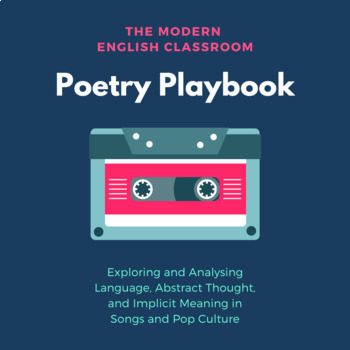Poetry Playbook: Analysing Figurative Language and Meaning in Popular Songs
- Google Slides™

Description
This comprehensive 30 slide/page package introduces students to literary devices, including: simile, metaphor, personification, allusion, alliteration, symbolism, onomatopoeia, hyperbole, oxymoron, and mood. After mastering the definition of a device, students apply that knowledge to unveil implicit meaning in songs that they love. Students "leave tracks of their thinking" by providing annotations and highlighting right on the page-- which promotes higher order and critical thinking over rote memorization of the devices.
A variety of current and culturally responsive hits from Taylor Swift, Rita Ora, Conan Grey, Imagine Dragons, 21 Pilots, Ava Max, and more are mixed with a few classics from ABBA, Simon and Garfunkel, just to name a few!
Embedded videos for topics and songs add to student engagement. Teachers can add or delete any pages that they see fit. An Answer Booklet is also provided for exemplars or to assist teachers who are new to critical analysis. Teachers may choose to distribute fully digital copies through Google Slides, or they can print as a booklet. A rubric is included for summative assessment.



